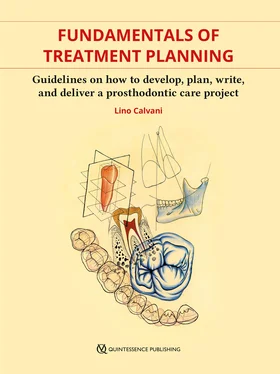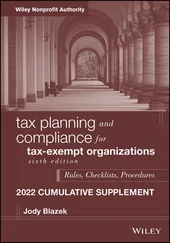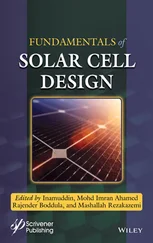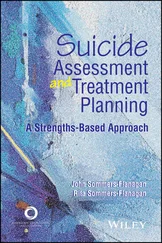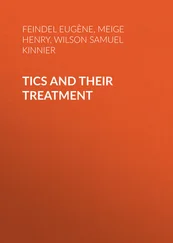References
1.Chamberlain EN, Ogilvie C. Symptoms and Signs in Clinical Medicine. Bristol, Wright, 1974.
2.Colby KM, McGuire MT. Signs and Symptoms. The Sciences 1981;21:21–23.
3.MacBride RM. Signs and Symptoms, ed 4. Philadelphia and Montreal: Lippincott Co, 1957.
4.Noth W. Handbook of Semiotics. Bloomington: Indiana University Press, 1990.
5.Ostwald PF. Symptoms, Diagnosis and Concepts of Disease: Some Comments on the Semiotics of Patient-Physician Communication. SocSeil 1968;7:95–106.
6.Staiano KV. Medical Semiotics: Redefining an Ancient Craft. Semiotica 1982;38:319–346.
7.Staiano KV. A semiotic definition of illness. Semiotica 1979;28:107–125.
8.Clarke DS. Principles of Semiotic. London: Routledge and Kegan, 1987.
9.Todorov T. Semiotics. Screen 1973;14:15–23.
10.McCarty PL, Sharpe MR, Spiesel SZ, et al. Observation scales to identify serious illness in febrile children. Pediatrics 1982;70:802–809.
11.Calvani M. Anamnesis, this unknown. From theory to diagnostic practice. Ped Oggi 1999;19:71–74.
12.Zakrzewska JM. Differential diagnosis of facial pain and guidelines for management. Br J Anaesth 2013;111:95–104.
13.Behan RJ. Pain: Its origin, Conduction, Perception, and Diagnostic Significance. New York: Appleton, 1926.
14.Glossary of Prosthodontic Terms. https://www.academyofprosthodontics.org/_Library/ap_articles_download/GPT9.pdf. Accessed 20 March 2019.
15.Smith JH, Cutrer FM. Numbness matters: a clinical review of trigeminal neuropathy. Cephalalgia 2011;31:1131–1144.
16.Collett HA, Briggs DL. Some psychosomatic considerations in prosthetic dentistry. J Prosthet Dent 1955;5:361–367.
17.Verheul W, Sanders A, Bensing J. The effects of physicians’ affect-oriented communication style and raising expectations on analogue patients’ anxiety, affect and expectancies. Patient Educ Couns 2010;80:300–306.
18.Zakrzewska JM. Multi-dimensionality of chronic pain of the oral cavity and face. J Headache Pain 2013;14:37.
19.Ghurye S, McMillan R. Orofacial pain – an update on diagnosis and management. Br Dent J 2017;223:639–647.
20.Melzack R. Pain Perception. In: Thompson RF (ed). Physiological Psychology. San Francisco: Freeman, 1972:223–231.
21.Benoliel R, Gaul C. Persistent idiopathic facial pain. Cephalalgia 2017;37:680–691.
22.Forssell H, Jääskeläinen S, List T, Svensson P, Baad-Hansen L. An update on pathophysiological mechanisms related to idiopathic oro-facial pain conditions with implications for management. J Oral Rehabil 2015;42:300–322.
23.Sotorra-Figuerola D, Sánchez-Torres A, Valmaseda-Castellón E, Gay-Escoda C. Continuous neuropathic orofacial pain: A retrospective study of 23 cases. J Clin Exp Dent 2016;8:e153–e159.
24.Guyton AC, Hall JE. Guyton and Hall Textbook of Medical Physiology, ed 11. Philadelphia: Elsevier Saunders 2006:664.
25.Ono Y, Shimo T, Shirafuji Y, et al. Drug-induced hypersensitivity syndrome caused by carbamazepine used for the treatment of trigeminal neuralgia. Case Rep Dent 2016;2016:4605231.
26.Renton T, Kahwaja N. Pain Part 5a: Chronic (Neuropathic) Orofacial Pain. Dent Update 2015;42:744–746, 749–750.
27.Briggs DL. Comments on the psychologic aspects of dental treatment. J Prosthet Dent 1957;7:158.
28.Deems DA, Doty RL, Settle RG, et al. Smell and taste disorders, a study of 750 patients from the Fisher GC. Some psychologic aspects of pain. J Prosthet Dent 1955;5:15–19.
29.Kelly HT. Psychosomatic aspects of prosthodontics. J Prosthet Dent 1955;5:609–622.
30.Melzack R. Pain. In: Kuper J (ed). A Lexicon of Psychology, Psychiatry and Psychoanalysis. London: Routledge 2015:288–291.
31.Moulton R. Oral and dental manifestations of anxiety. Psychiatry 1955;18:261–273.
32.Lindemann B. Receptors and transduction in taste. Nature 2001;413:219–225.
33.Silverman SI. The psychologic considerations in denture prosthesis. J Prosthet Dent 1958;8:582–590.
34.El-Gabalawy H, Guenther LC, Bernstein CN. Epidemiology of immune-mediated inflammatory diseases: incidence, prevalence, natural history, and comorbidities. J Rheumatol Suppl 2010;85:2–10.
35.Stankov SV. Definition of Inflammation, Causes of Inflammation and possible Anti-inflammatory Strategies. The Open Inflammation Journal 2012;5:1–9.
36.Martin MA, Silverman HJ. Gram-negative sepsis and the adult respiratory distress syndrome. Clin Infect Dis 1992;14:1213–1228.
37.Siew C, Chang SB, Gruninger SE, Verrusio AC, Neidle EA. Self-reported percutaneous injuries in dentists: implications for HBV, HIV, transmission risk. J Am Dent Assoc 1992;123:36–44.
38.Gallinaro R, Cheadle WG, Applegate K, Polk HC Jr. The role of the complement system in trauma and infection. Surg Gynecol Obstet 1992;174:435–440.
39.Alter MJ, Hadler SC, Judson FN, et al. Risk factors for acute non-A, non-B hepatitis in the United States and association with hepatitis C virus infection. JAMA 1990;264:2231–2335.
40.Centers for Disease Control (CDC). Current Trends Increases in Primary and Secondary Syphilis – United States. MMWR 1987;36:393–397.
41.Go GW, Baraff LJ, Schriger DL. Management guidelines for health care workers exposed to blood and body fluids. Ann Emerg Med 1991;20:1341–1350.
42.Richardson MD. Opportunistic and pathogenic fungi. J Antimicrob Chemother 1991;28(suppl A):1–11.
43.Morgan BP, Walport MJ. Complement deficiency and disease. Immunol Today 1991;12:301–306.
44.Rodriguez HR, Simental-Mendia LE, Rodríguez-Ramírez G. Obesity and Inflammation: Epidemiology, Risk Factors, and Markers of Inflammation. Int J Endocrinol 2013:1–11.
45.Rubin JT, Lotze MT. Immune function and dysfunction. A primer for the radiologist. Radiol Clin North Am 1992;30:507–523.
46.Plytycz B, Seljelid R. From inflammation to sickness: historical perspective. Arch Immunol Ther Exp (Warsz) 2003;51:105–109.
47.Heidland A, Klassen A, Rutkowski P, Bahner U. The contribution of Rudolf Virchow to the concept of inflammation: what is still of importance? J Nephrol 2006;19(suppl 10):S102–S109.
48.Scott A, Khan KM, Cook JL, Duronio, V. What is “inflammation”? Are we ready to move beyond Celsus? Br J Sports Med 2004;38:248–249.
49.Fox PC. Xerostomia: recognition and management. Dent Assist 2008;77:18, 20, 44–48.
50.Guggenheimer J, Moore PA. Xerostomia: etiology, recognition and treatment. J Am Dent Assoc 2003;134:61–69.
51.Pankhurst CL, Smith EC, Rogers JO, Dunne SM, Jackson SH, Proctor G. Diagnosis and management of the dry mouth: Part 1. Dent Update 1996;23:56–62.
52.Greenspan D. Xerostomia: diagnosis and management. Oncology (Williston Park) 1996;10(3 suppl):7–11.
53.Guchelaar HJ, Vermes A, Meerwaldt JH. Radiation-induced xerostomia: pathophysiology, clinical course and supportive treatment. Support Care Cancer 1997;5: 281–288.
54.Maletkovic J, Drexler A. Diabetic ketoacidosis and hyperglycemic hyperosmolar state. Endocrinol Metab Clin North Am 2013;42:677–695.
55.Eledrisi MS, Alshanti MS, Shah MF, Brolosy B, Jaha N. Overview of the diagnosis and management of diabetic ketoacidosis. Am J Med Sci 2006;331:243–251.
56.Misra S, Oliver NS. Diabetic ketoacidosis in adults. BMJ 2015;351:h5660.
57.Misra S, Oliver NS. Utility of ketone measurement in the prevention, diagnosis and management of diabetic ketoacidosis. Diabet Med 2015;32:14–23.
58.Wu AJ. Optimizing dry mouth treatment for individuals with Sjögren’s syndrome. Rheum Dis Clin North Am 2008;34:1001–1010.
59.Ram S, Kumar S, Navazesh M. Management of xerostomia and salivary gland hypofunction. J Calif Dent Assoc 2011;39:656–659.
60.Rhodus NL, Brown J. The association of xerostomia and inadequate intake in older adults. J. Am Diet Assoc 1990;90:1688–1692.
Читать дальше
